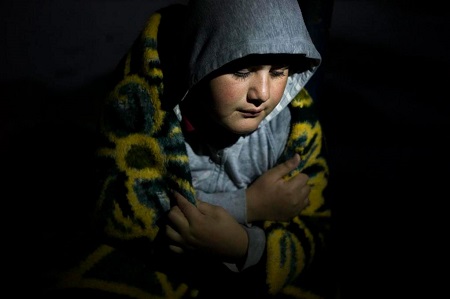Escaping ISIL, Caught in Winter

Months have passed since some 40 nations signed the 17 September 2014 Jeddah Communiqué, pledging to apply their various political, economic and military resources to beat the Islamic State of Iraq and the Levant (ISIL), also known as Islamic State of Iraq and Syria (ISIS). However, the steep rise in recent internal displacements has combined with a $58.4 million funding shortage to complicate United Nations efforts to assist millions of refugees across Iraq and Syria as they prepare for the onset of a long and cold winter.
UNHCR has described the remaining needs in Iraq as “massive,” and even more pressing amid floods of internally displaced persons and refugees who continue to pour into the country from Kobane, Syria.
A combination of sources indicates that at least 2,998,000 Iraqis were internally displaced as of 4 November 2014. This estimate comes amid great difficulties in assessing the very fluid situation and consequently mobile population. The UN Office for Coordination of Humanitarian Affairs (OCHA) reported, in June 2014, that the location of hundreds of thousands of thousands of IDPs remained unknown.
This nearly three million figure combines two waves of Iraqi displaced:
- 1.898 million IDPs displaced from December 2013 to October 2014
- 1.1 million protracted IDPs already from the 2006–08 sectarian conflict
The wave of displacement during August–October 2014 has involved the addition of cross-border displacement, with about 55,000 Iraqi IDPs from Sinjar/ShingalDistrict (Nineveh Province) crossing into Syria. Since then, most of those displaced persons have crossed back into Iraq’s Kurdish Region; however, many reportedly are unable to leave areas afflicted by heavy fighting or surrounded by ISIL.
As of 5 October, roughly 47% of all of Iraq’s IDPs are being hosted in the high altitude areas of Iraq’s Kurdistan Region, where the coming winter temperatures can drop well-below zero (C). Meanwhile, the remaining half are spread throughout the rest of Iraq, with about 20% of the entire Iraqi IDP population found in Anbar governorate. In all regions, hundreds of thousands of refugees and IDPshave found temporary shelter in unfinished buildings, informal settlements, or overwhelmed public structures, as well as in the open air.
Approximately 800,000 people are in need of shelter assistance, while 940,000 lack basic winter household items. With current funding, UNHCR now expects to reach only 240,000 displaced Iraqis with winter aid instead of the 600,000 we had planned to reach as part of an inter-agency effort. For example, our funding gap means we cannot provide tent insulation kits and boards for 140,000 people and 150,000 people cannot receive supplementary material like heaters and kerosene.
In Syria, meanwhile, the ongoing civil war continues to displace civilians, fuelling an increase in the need for winter aid, with priority areas for distribution of thermal blankets and winter clothing being the besieged city of Aleppo and northern parts of the country as they are the coldest.
The UN country team in Syria has targeted a population of 2.05 million people for core winter relief kits, each includinghigh-thermal blankets, extra plastic sheeting, winter clothes, mattresses, sleeping mats, jerry cans and hygiene supplies sufficient for a family of five. Currently, however, we only have enough funds to provide kits to 620,000 people through December, and require another $27.4 million to cover all 1.4 million Syrian IDPs through the winter.
Amnesty International has characterized the displacement that systematically has targeted non-Arab and non-Sunni Muslim communities as “Ethnic Cleansing on a Historic Scale.”ISIL/ISIS has killed or abducted hundreds, possibly thousands, and forced more than 830,000 others to flee the areas it has captured since 10 June 2014.
Under international law, all states bear a self-executing obligation not to recognize or cooperate in any way with the illegal situation. Nonetheless, Iran, Turkey and Syria continue to purchase oil from ISIL-controlled sources, while Lebanese, Iraqi, Iranian, Jordanian, Syrian and Turkish businessmen involved in the oil sector both finance and trade with ISIL, adding fuel to the fire in their region.
Photo: Front page: Displaced people from the minority Yazidi sect, fleeing violence from forces loyal to the Islamic State in Sinjar/Shingal town. Source: Rodi Said /Reuters; This page: A displaced young Iraq boy in the north of the country uses a blanket to protect himself from the cold as a storm rages outside the half-built structure where he and his family have found shelter in Iraq`s Kurdistan region. Source: D. Nahr/UNHCR.
Maps and photos of the conflict with ISIL.
|